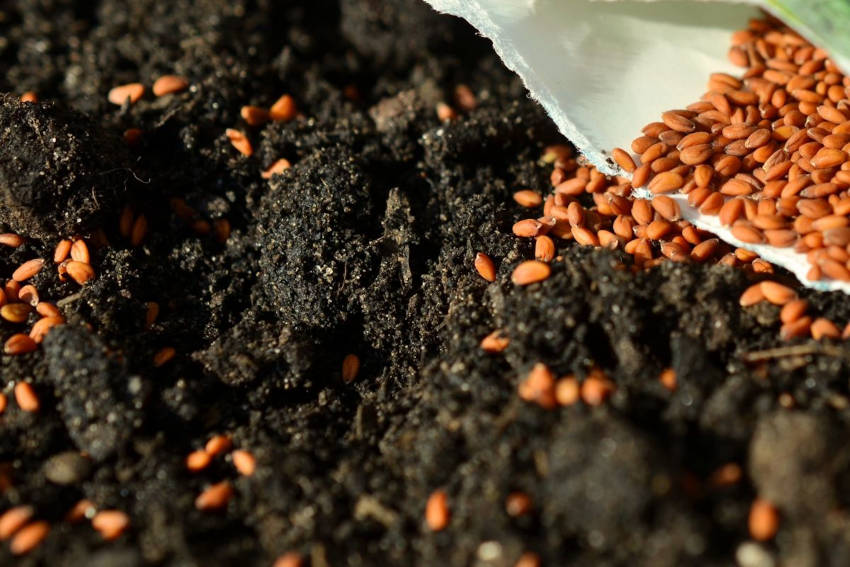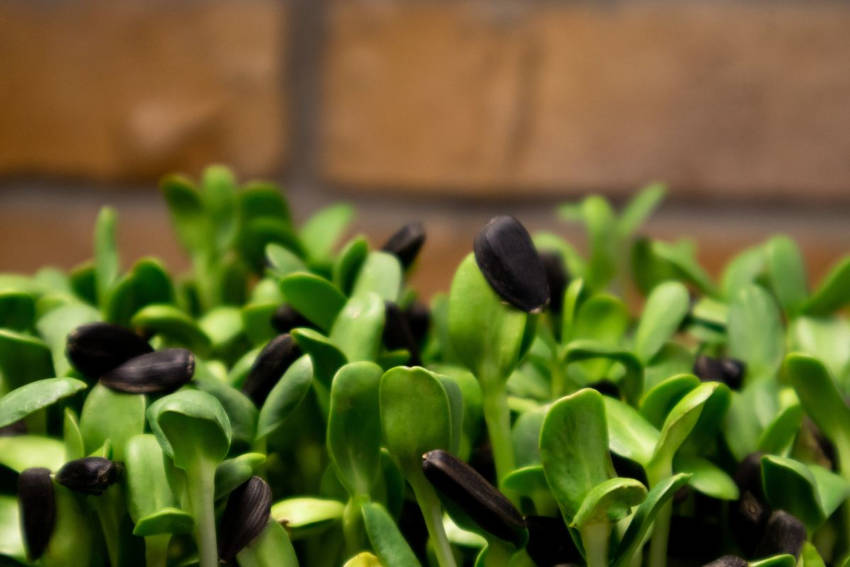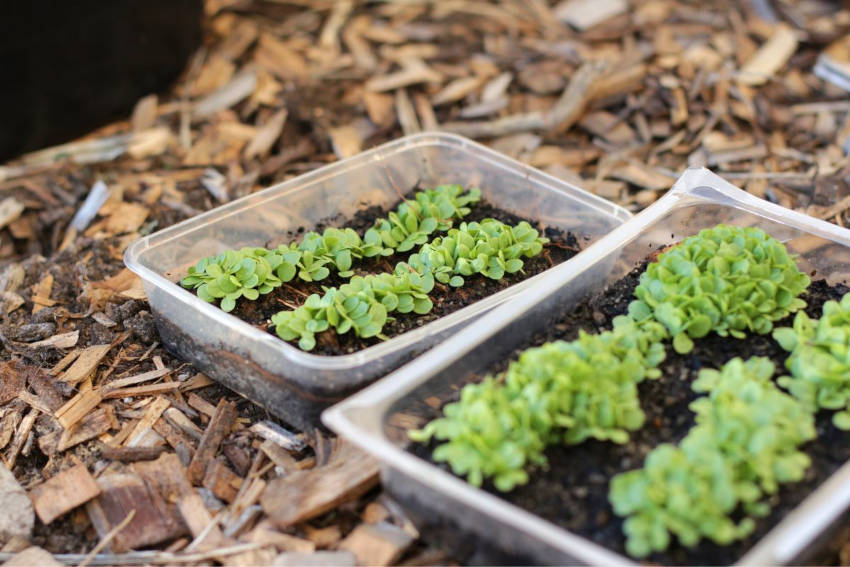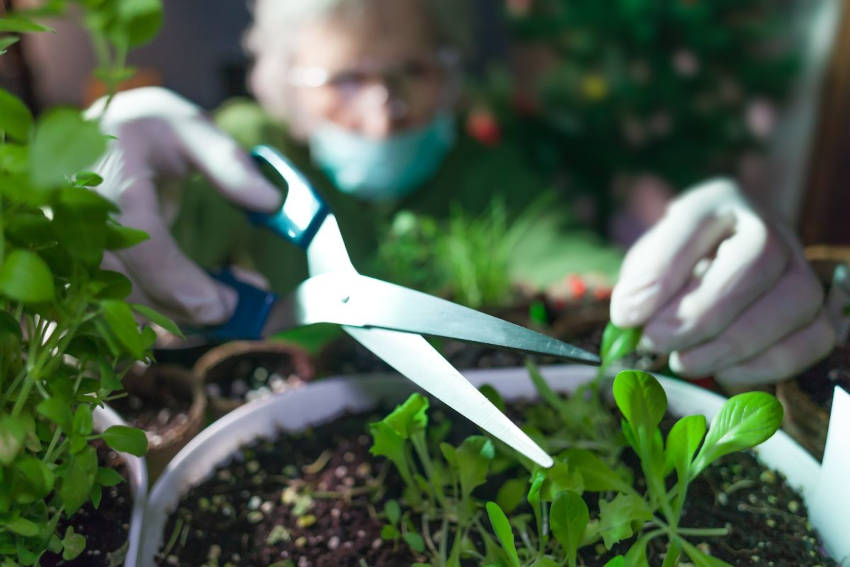You don't always need a thriving veggie patch to put homegrown food on the table. A few freshly picked young leaves can add a surprising amount of interest and nutritional value to a plate. Growing baby leaf veggies is a quick, easy and space-efficient way of doing exactly that.
What is Baby Leaf?
Essentially, baby leaf is the young growth of any leafy green veg that's harvested long before maturity, often only a week or two after germination.
The benefit of cutting young is partly in the flavour, which is usually milder, sweeter and nuttier than with older leaves, avoiding the bitter or metallic edges that mature leaves can take on. However, young leaves are also more tender and need no cooking, and cutting early means you can enjoy a rolling harvest and a constant supply of leaves throughout the growing season.
While growing other kinds of immature crops such as sprouts can take some effort and expertise, growing baby leaf is simplicity itself. All you need is a seedling tray of soil, some seeds and water, and you're good to go.
Good Varieties for Baby Leaf
Almost any plant that produces edible greenery can be grown as a baby leaf. However, fast-growing leafy greens and similar varieties make the most productive choices, with salad-like options including spinach, loose leaf or hearting lettuce, chicory, endive, mustard, leaf amaranth, mizuna, rocket, silverbeet and tatsoi.
In addition, some more unusual choices for leafy greens can also bring good results, including beetroot and radish with their peppery leaves, or leafy herbs such as basil with their intense flavour bursts. The speed and economy of baby leaf growing means it's a perfect area for experimentation, so let your imagination have free rein.
Baby leaf is also a great way to use up last year's seed surplus, as the relaxed sowing style means reduced germination rates aren't an issue. You can sow a single variety at a time or a mix, depending on what you have to hand.
Baby Leaf in the Kitchen
Freshness and simplicity are the watchwords for baby leaf in the kitchen. After harvesting, simply rinse, pat dry and serve as soon as possible.
Baby leaf is almost always served raw, either in a salad, as a garnish, or to liven up a sandwich. The leaves are great on their own, pepped up with a dressing, or mixed in with other leaves and edible flowers to make a zesty garden fresh salad.
How to Grow Baby Leaf from Seed
Baby leaf can be grown indoors in a seed tray, punnet, mini greenhouse or recycled container with drainage holes, such as a strawberry punnet. Position the tray or container so there's plenty of light available. Baby leaf can also be grown outdoors, either in a container or in the open soil. In all cases, prepare the soil so that it's fine, light and freely draining, then sow by scattering the seeds over the surface.
Aim for spacing of 2-8 cm between each seed, depending on variety, but accuracy isn't essential as the leaves will be harvested long before overcrowding becomes a problem. Mixing smaller seeds with sand can make spacing the seeds out a little easier to control.
Next, give the seeds a fine dusting of soil or compost, taking care not to bury light-loving seeds like lettuce too deeply. Water in well, being careful not to wash the seeds away, place them in a sunny position, and keep watering regularly right through until harvest.
Harvesting Baby Leaf
All baby leaves should be harvested young. For 'cut and come again' varieties cut off only the outer leaves, leaving at least three to four inner ones to regrow. Otherwise, simply trim the leaves off at the soil level using scissors or snips whenever you need them.
Baby Leaf Growing Tips
- Fast growth and frequent harvests are essential for baby leaf growing. Don't sow too large an area at once. Rather, sow a small amount of seed successionally every 7-10 days to provide a continuous supply.
- Start off by sowing into a standard seed tray or two, and from there, you can scale up or down to meet your needs.
- The short life of baby leaf means feeding isn't essential, but for longer-lived cut-and-come-again crops, or ones grown in the open soil, a liquid feed every couple of weeks will help maintain soil fertility.
- If growing outdoors be on the lookout for slugs and snails, birds and other pests that will make short work of tender young seedlings.
Baby leaf is incredibly easy to grow and nutritious to eat. Just continue harvesting regularly to stop the plants from running to seed and you'll always have a few leaves on hand to brighten up your meals.










